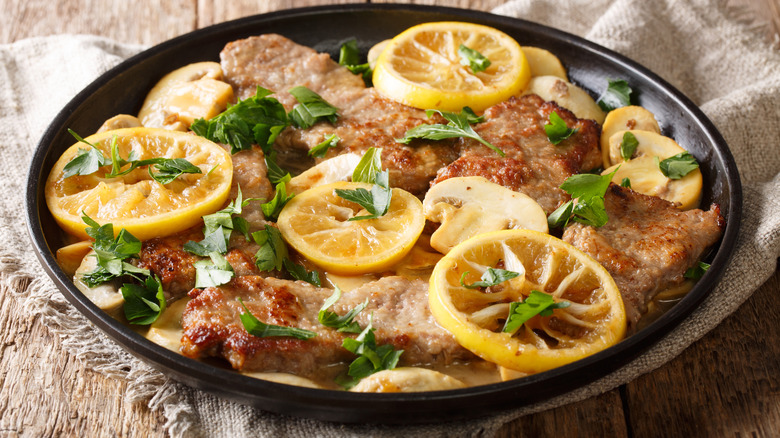Scallopini: The Italian Classic With French Roots
When you think of scallopini, you most likely envision the classic Italian meat dish — and for good reason. A simple internet search will result in hundreds of recipes and variations of this comforting food. If we asked you to picture a plate of escalope, on the other hand, you would probably look at us with confusion. But what if we told you that, much like the chicken and the egg, there wouldn't be one without the other? In fact, the name scallopini (or scaloppine) was likely derived from the French word escalope, referring to boneless, thin slices of meat (via ifood.tv).
Nearly all Western nations have a version of this dish, all steeped in their own traditions and preparations. In addition to the Italian scallopini and French escalope, there's the German/Austrian schnitzel and even the cutlet, America's version of this thinly-sliced meat dish, according to The Cookful.
A versatile and easy dish
Traditionally, scallopini is made with thinly-sliced veal that is lightly coated in flour, fried in a pan, and finished in a sauce of butter, wine, and capers (via La Cucina Italiana). Mushrooms and artichokes are often added to the sauce. The beauty of scallopini is that a variety of meats can be used, including turkey, chicken, pork, and even fish, as in this swordfish scallopini recipe. The hearty dish goes well with a number of accompaniments like pasta, rice, or mashed potatoes.
Escalope follows much the same recipe as scallopini, though the slices of meat are sometimes coated in breadcrumbs before hitting the frying pan, according to Ask Nigella. Chicken escalope is often served with a creamy mushroom sauce (via A Family Feast). Schweineschnitzel, the simple German and Austrian classic, is made with pork and simply served with a slice of lemon and no sauce (via The Daring Gourmet).
Whether you call it scallopini, escalope, schnitzel, or chicken fried steak, this dish is the ultimate comfort food, as versatile as it is delicious.

